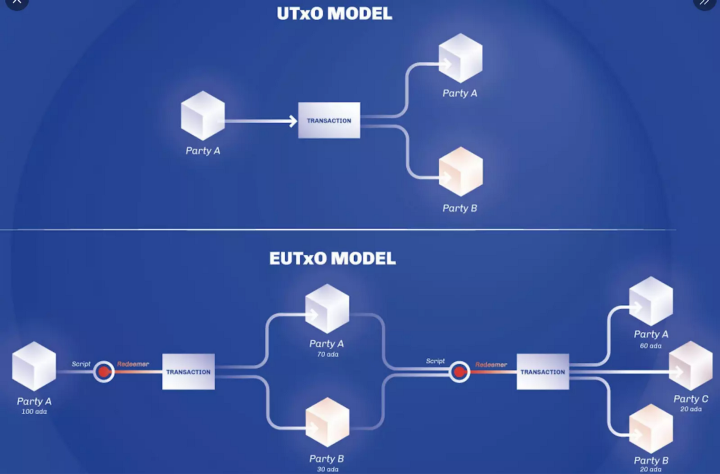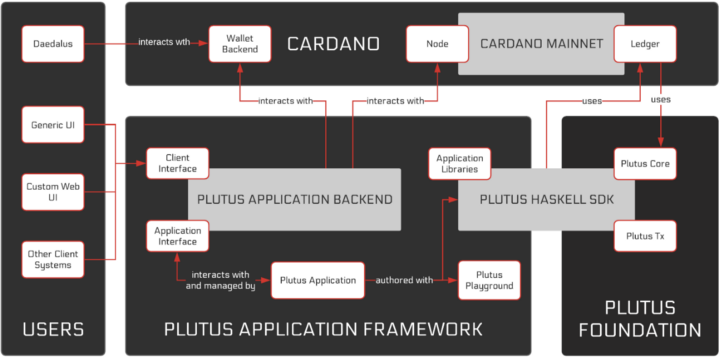
first level title
Comparison of UTXO and account models
In the UTXO model, the movement of assets is recorded in the form of a directed acyclic graph of transaction outputs, with each additional block adding new outputs.
In the account model, the balance is stored as the global state of the account, and each node will save it and update it in real time with each block. This model is similar to a database. Information such as balance, contract, and nonce is stored under the account. It also leads to the core bottleneck - the state explosion problem:
The size of the entire history of the Bitcoin network (the size of all blocks combined) has grown to 229GB in 10 years, while the Ethereum network has grown to 262 GB (Geth) / 180 GB in just 4 years.Therefore, the larger the transaction size in the account model, the heavier the burden on users and wallets.

In short, the UTXO model can provide storage advantages because the state and transaction size of the account are smaller; but the account model is more efficient in terms of simplifying the scaling scheme (state and payment channel construction, etc.) and sharding.
To give a simple example, it is like building a tall building:
The advantage of UTXO is that it can save labor and materials as much as possible under the premise of ensuring safety - the same building material account model may only build one layer, which is very expensive, while UTXO can build three layers at the same cost; but The problem is that the optimization space after completion is limited, and it is difficult to carry out reconstruction and expansion in the future;
The advantage of the account model is that it reserves enough space for future renovation and expansion. Even if it is a minimalist tube building, it can be upgraded to a high-end apartment if it is continuously renovated and expanded in the future; but it is also expensive and consumes a lot of resources. .
first level title
EUTXO learns from each other
From this point of view, Cardano’s EUTXO (Extended UTXO) inherits the advantages of the Bitcoin UTXO model’s low resource consumption at the consensus layer, and considers the implementation requirements of smart contracts in terms of state selection, drawing on the design ideas of Ethereum. Incorporates an improved account model.

In one sentence,EUTXO combines and further improves the security of Bitcoin and the programmability of Ethereum.Making this model vastly superior to account models used by other blockchains, it ensures several key properties:
Better security: each transaction uses a different address, which makes it impossible for others to trace the address or find the user's overall balance;
Scalability: UTXO ledger allows parallel transactions, which greatly reduces on-chain congestion;
Interoperability: EUTXO makes it easier for Cardano to establish interoperability between different blockchains thanks to the implementation of off-chain and sidechain protocols;
In Cardano, EUTXO inherits the security and convenience of UTXO, and at the same time, through the optimization and adjustment of the account model, it enhances interoperability and scalability to maximize the throughput, thus breaking through the application of future business scenarios. performance bottleneck.
first level title
Developer-friendly Plutus architecture

Functional language, that is, Haskell is more compatible with EUTXO;
An object-oriented programming language, Solidityy, is more compatible with the account model;
As the underlying custom language of Plutus, Cardano’s smart contract programming language, Haskell can be said to be specially designed for DApps, and its core is around the two keywords of “portability” and “safety”:
Based on Haskell's predictability, this makes bugs in smart contracts easy to identify. It is different in Solidity smart contracts. Developers must have a very deep understanding of Solidity, such as solutions to many similar problems such as reentrancy attacks;
After compiling Haskell to Plutus, the function will return only two outputs, True/False. This means that it will not have unpredictable state changes - the output is completely dependent on the input, and if the input is the same, no matter how many times you call the function, you will get the same output. And these functions are also often easier to debug, since there is no need to consider every state a variable may be in;
From this perspective, Haskell might not be the next opportunity worthy of developers' attention, providing it with a set of handy tools (you can refer to Adaverse's development based on thisNFT market DEMO code library)。
first level title
New public chain myth
The recent dramatic development of the industry in one day and ten years has made people re-examine the myth of the new public chain, especially the "Ethereum killers" like Solana who used to hold high the banner, and now they have fallen to the altar one by one. The seemingly huge ecology at the time is also about to collapse in the face of an avalanche of confidence and a market value that evaporates like morning dew.
After the enthusiasm for the new public chain subsides, it seems that only Bitcoin and Ethereum are more resilient and worthy of attention and expectation.
But at the same time, the overall situation of Bitcoin and Ethereum is stable. For developers or project parties (especially for start-up teams), it is even more difficult to succeed in any track that is already full of red seas. .
Everyone is often caught in the dilemma of turning a blind eye to the "elephant in the room" - an old public chain project like Cardano has also experienced several rounds of bulls and bears in the encryption industry, and its market value is stable, and the community has passed the test of time and the market.
Everything in the past is prologue. In 2018 and 2021, we have ushered in the "public chain craze" with great momentum, but in the end, only a handful of them can come out, and the industry will give the most suitable answer.
Cardano is often overlooked as the "elephant in the room". For example, on September 22, the Vasil hard fork upgrade of the Cardano mainnet was successfully activated.Few people pay attention to the significance of bringing Cardano into the era of smart contracts. Smart people will be highly sensitive to the possible investment opportunities in the period.
However, the competition of public chains has always been brutal. Cardano, which has just entered the era of smart contracts, is currently in a very early stage. It is expected that as more and more DApps are released on Cardano, the richness and liquidity of DApps will be huge. improvement.
Along with Cardano's deep progress in the era of smart contracts, in this general trend visible to the naked eye, as Cardano's global incubation investment fund, Adaverse relies on the endorsement support of Cardano's official team to focus on incubating and investing in Cardano's full-track ecological projects. Many developers have introduced the Web3 ecosystem to build a wide-ranging Web3 DApp ecosystem based on Cardano's blockchain infrastructure.
At the same time, as a commercial incubation company and venture capital institution under Cardano, Ken Kodama, CEO of EMURGO, also stated that Emurgo will invest more than 200 million US dollars to support the growth of Cardano's ecology in the next three years, of which funds come from Emurgo's own capital , will be used directly in Cardano projects as well as in other networks whose products will be integrated with the Cardano network.
text
Original link





